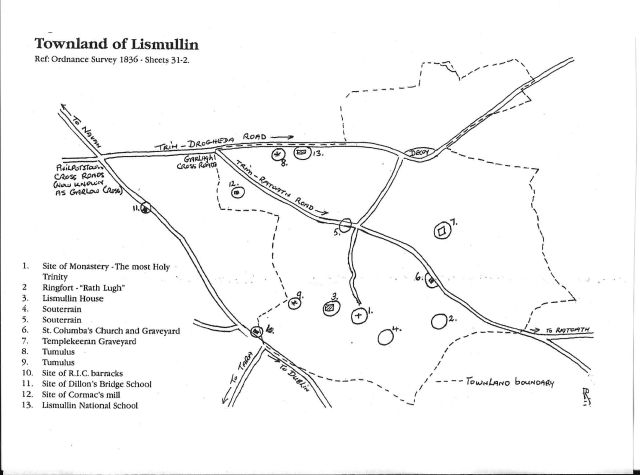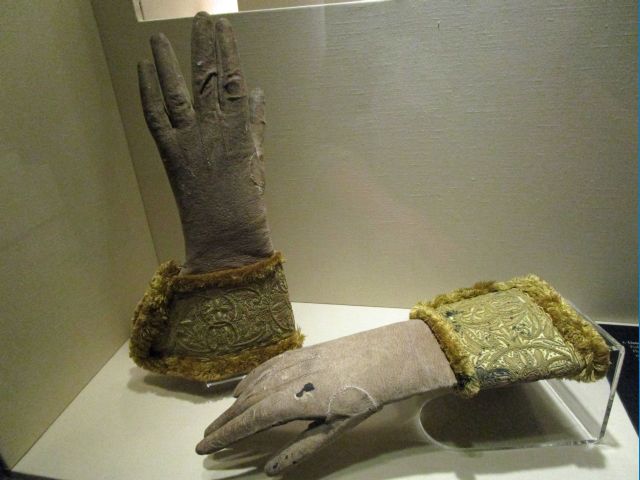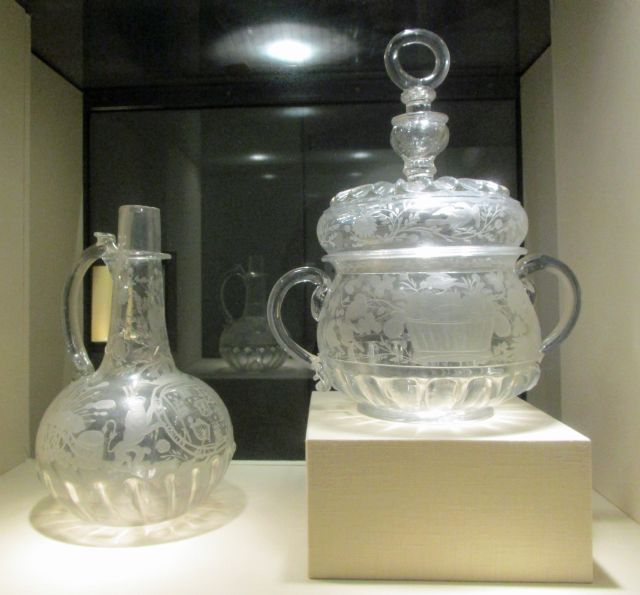Lismullin

Map of Lismullin Source: "Lismullin Norman Times to Twentieth Century" Catherine Sorohan
About 2 miles NE of the Hill of Tara, in the Barony of Skryne, lies the townland of Lismullin.
It would appear that Lismullin has been inhabited since early Christian times as there are at least 2 souterrains and a large ringfort in the area. The ringfort is known locally as Rath Lugh.
The name Lismullin comes from the Irish Lios Muilinn, which means "fort of the mill." The history of the mill can be traced back to the 11th century. It was built on the River Gabhra, which joins the Skane at Dowdstown, which in turn enters the Boyne at Ardsallagh. Tradition has it that this mill was the first corn mill in Ireland, and that its origin goes back to the 3rd century when Cormac Mac Airt reigned at Tara. This mill was located at Blundellstown, now known locally as Mill Farm.
Hugh de Lacy was awarded the ancient Kingdom of Meath by Henry II, and as was the custom, he divided it up among his Knights (Barons). Lismullin Manor and lands were given to the Nangle family. When Richard de la Corner (Nangle) became Bishop of Meath in 1232 he had this property in his possession. He granted the estate at Lismullin to his sister Alicia, who, in 1240, set up a monastic foundation for nuns on the site, with herself as Prioress. It was dedicated to the Most Holy Trinity, and was one of the great monasteries of the Pale until the Reformation. Lismullin was a Norman foundation, there were no Irish nuns in the community.
In 1539, during the Reformation, the Commissioners of Henry VIII, came to Lismullin and demanded the surrender of the monastery and its lands (which at this time contained land in Meath, Dublin and Westmeath) to the king. The Prioress Maria Cusack had to assemble her community in the chapter house for the last time and go through the motions of "voluntary surrender". Some of the nuns got pensions after they were expelled from their monastery, Maria Cusack receiving a pension of £16 per annum.
Sir Thomas Cusack, the Chancellor of the Irish Exchequer, had his loyalty to the king rewarded, when he was able to obtain possession of some of the suppressed monasteries, chief among them being Our Lady's of Trim and Lismullin. From 1540 he lived at Lismullin. He consolidaed his position, and in 1547, Henry VIII's successor Edward VI granted Sir Thomas Cusack Knight, for £413.1s1d "the land and circuit of the Priory of Lismullin, with the glebe lands and manor of Lismullin: a watermill and watercourse in Blundlestone, parcel of the possessions of the said house, to hold forever at a rent of £1.2s per annum."
From the latter part of the 17th century however, the Cusacks were Catholics.
The Dillons at Lismullin (c. 1650 -1966)
More than 100 years after Sir Thomas Cusack acquired Lismullin, the property passed to the Dillons when a Dillon from Rivertown married a Miss Cusack, heiress of Lismullin. The Dillons were an ancient family, long distinguished in government and law. The property remained in the possession of this family until 1966 when it was bought and set up as a conference centre.
According to Dillon family tradition, William III Prince of Orange and King of England, spent a night at Lismullin immediately after his victory at the Battle of the Boyne. Before departing the following morning, the King left 5 objects as a mark of appreciation. These were a decanter, a posset bowl, a bed coverlet, and 2 pairs of gauntlets, all of which are today on display in the National Museum of Ireland at Collins Barracks.


(above) The 17th century glass decanter, posset bowl and gauntlets from Lismullin.
Turlough O'Carolan the composer and harper was always welcome at the Dillon home, and on one occasion entertained a large party of wedding guests assembled in the Great Hall.
20th Century - the War of Independence and the Civil War
There was an RIC Barracks located at Lismullin known as Dillons Bridge Barracks. On 31st Oct. 1919 it was raided by the Volunteers (IRA) in search of weapons, and the police sergeant Sgt. Matthews, was seriously wounded. A second visit to the Barracks saw it completely burned out.
During the Civil War, there was a campaign of burning country houses. Lismullin was targeted on the 4th April 1923.
The owner of the house was Sir John Dillon aged 80, who was at dinner with his wife and daughter when the burning party arrived. See the report below from the London Times:
"The residence of Sir John Fox Dillon at Lismullin midway between Navan and Dunshaughlin, Co. Meath, was burned to the ground on Saturday morning by six armed men. At about 11.30 in the morning the men arrived at the house, which is situated in a pituresque position not far from the Hill of Tara. Sir John Dillon, having ascertained the object of their visit, remonstrated with the men reminding them of a good turn which he had done them some time previously. After a short consultation they told him that they were sorry but that they had their orders. They gave him some time to remove some of his valuable furniture and personal effects, and then set the house on fire. With the exception of part of the servant's quarters, it was demolished completely." The Times, 9th April 1923.
Ironically, some of the objects saved that night were the gifts from King William to Sir John's ancestors mentioned above.
Elizabeth Countess of Fingall in her book "Seventy Years Young" describes how Sir John Dillon tried to warn his friend Lord Fingall about the imminent burning of Killeen Castle home to the Fingalls, by sending a small barefooted boy running across the Hill of Tara with the following note:
"Dear Fingall, They are burning my house, and they say they are going on to you. I thought I had better let you know. John Dillon".
(The burning party did not, in fact, go over to Killeen Castle that night.)
The Meath Chronicle published a lengthly article on 14th April 1923 commenting on the attack:
"... as a result of their activities nothing remains of a magnificent mansion but a blackened outline of gaunt walls.... The object of the destruction can only be surmised, for Sir John Dillon took no part in recent events and is not a member of a public body but lives quietly at Lismullin, attending to his home and to his demense, where he gave a great deal of employment. His permanent staff exceeded thirty, and his weekly wages bill amounted to a very considerable sum indeed. He was justly regarded as an excellent employer, paying the highest standard wage... As a landlord, before he had sold to his tenants, which he did early and readily and on advantageous terms, he was one of the very best."
Baronstown House
Baronstown House is located near Ross Cross, Skryne. It is a two storey house with a single storey projecting porch. The house had a gatelodge opposite the front entrance. Erected between 1836 and 1854 Baronstown House was held by Edward T. Wilkinson in 1854. He was leasing the house and the entire townland of 61 acres from Sir Edward McDonnell. In 1901 and 1911 Adderly B. Wilkinson and his family were living at Baronstown. The house had twelve rooms, five windows to the front and nineteen outbuildings in 1911. The house was burned April 1923 during the Troubles. Five armed men came to Baronstown after setting Lismullin House alight. They ordered the Wilkinson family out, giving them twenty minutes to gather their belongings. An explosive mine was laid in the hall and when it went off a fire broke out but it was brought under control. A few days later two armed men arrived and ordered Mr. Wilkinson out. He was laid up in the bed as a result of the shock. Giving them only two minutes the two men took petrol from an outhouse and set the house on fire again, this time completely destroying the building. The house was re-built by the Wilkinsons who continued to live at Baronstown. Adderly Edward Wilkinson was the son of A.B. Wilkinson. Roger Casement was a personal friend and he visited Baronstown regularly. Douglas Hyde and Countess Markievicz were friends and Percy French was a classmate. Adderly acted on the stage of the Gaiety with Sarah Bernhart. He knew George Bernard Shaw. A civil engineer he spent his life in India and Canada, mainly building bridges. When he retired he returned to Ireland and lived at Newtown Park, Trim.
Source: meath-roots.com
*******
Conference Centre
After the fire, the house at Lismullin was rebuilt as a more modest 2 storey building and in the 1960s the Irish Land Commission purchased and distributed the lands to the farming community.
The house was set up as a conference centre by Opus Dei.
*******
Some Recent Excavations:
http://www.excavations.ie/report/2004/Meath/0012405/
County: Meath Site name: TESTING AREA 9, LISMULLIN
Excavations.ie number: 2004:1283 License number: 04E0426
Author: Linda Clarke, Archaeological Consultancy Services Ltd, Unit 21, Boyne Business Park, Greenhills, Drogheda, Co. Louth.
Site type: Pits
ITM: E 693764m, N 760805m
Latitude, Longitude (decimal degrees): 53.588716, -6.583768
An assessment was carried out in advance of the planned M3 Clonee-North of Kells PPP scheme, Co. Meath, on the Dunshaughlin-Navan section (Contract 2) between February and June 2004. This section of the scheme is c. 15.5km long from the townland of Roestown, north-west of Dunshaughlin, to the townland of Ardsallagh, south-west of Navan town. The EIS recommended testing any known or possible sites identified and Meath County Council further proposed to test the whole of the remainder of the route. For the purposes of testing, this section was divided into 26 testing areas. The assessment methodology generally consisted of mechanically excavating 2m-wide test-trenches along the centre-line and perpendicular to the centre-line to the edge of the land-take every 20m. The work was carried out on behalf of Meath County Council, the National Roads Design Office and the National Roads Authority.
Testing Area 9 is located in Lismullin townland between Chainages 28600 and 29650. Within this area, 8578.6m2 out of a total of 77,458m2 was test-trenched, providing an assessment coverage of 11%. A potential archaeological site was identified as a result of the geophysical data (Area 15). A total of eleven pit features were identified within this field during the assessment phase of works. This site was designated Lismullin 1. Some of these features were quite shallow and may simply represent the lower portion of a pit or hollows in the ground. No finds were recovered from this site, although small fragments of animal bone were recovered from four features (and burnt bone was recovered from one). The majority of these features were located in the north-western portion of the field. This was the location of the potential archaeological site identified as a result of the geophysical data.
http://www.excavations.ie/report/2004/Meath/0012406/
County: Meath Site name: TESTING AREA 10, LISMULLIN
Excavations.ie number: 2004:1284 License number: 04E0427
Author: Linda Clarke, Archaeological Consultancy Services Ltd, Unit 21, Boyne Business Park, Greenhills, Drogheda, Co. Louth.
Site type: No archaeological significance
ITM: E 693162m, N 761634m
Latitude, Longitude (decimal degrees): 53.596278, -6.592608
An assessment was carried out in advance of the planned M3 Clonee-North of Kells PPP scheme, Co. Meath, on the Dunshaughlin-Navan section (Contract 2) between February and June 2004. This section of the scheme is c. 15.5km long from the townland of Roestown, north-west of Dunshaughlin, to the townland of Ardsallagh, south-west of Navan. The EIS recommended testing any known or possible sites identified and Meath County Council further proposed to test the whole of the remainder of the route. For the purposes of testing, this section was divided into 26 testing areas. The assessment methodology generally consisted of mechanically excavating 2m-wide trenches along the centre-line and perpendicular to the centre-line to the edge of the land-take every 20m. The work was carried out on behalf of Meath County Council, the National Roads Design Office and the National Roads Authority.
Testing Area 10 was located in the townland of Lismullin between Chainages 29650 and 30150. Within this area, 5604m2 out of a total of 41,807m2 was test-trenched, providing an assessment coverage of 13%. A significant portion of woodland was also contained within Testing Area 10. This portion of road-take was not archaeologically assessed during this phase of works.
Testing Area 10 consisted of two fields. No features of archaeological significance and no finds were recovered from Field 1 and a single pit and an old field boundary were exposed in Field 2. A field boundary was depicted within this position on the OS map of 1836. The pit was excavated. No other features of archaeological significance were exposed and no finds were recovered. The geophysical results identified hollows within this field that may be indicative of quarrying. This may be indicated by the varying consistencies within the natural subsoil. The natural subsoil within this field was quite changeable, with bands and pockets of boulder clay, gravel of varying consistencies and colours (light-dark-brown and grey) and stony boulder clay visible throughout the excavated trenches. The faint linear anomalies identified and the scatter of possible pits also appear to represent variations in the natural subsoil.
*******
Principal Sources for Material above:
1 Anthony Cogan Diocese of Meath Ancient and Modern vol.1 (1862)
2 ibid p.221
Lismullin - Norman Times to Twentieth Century Catherine Sorohan
published in Studies in Local History - Meath Liam McNiffe Editor
Ríocht na Midhe 1962 p. 63 Sir Thomas Cusack
Seventy Years Young - Lady Elizabeth Fingall London 1937 pp 435-6
*******
Lismullen
The Lewis' Topographical Directory was first published in 1837 in two volumes, with an accompanying atlas. The first edition is available online. A second edition was published in 1842.
NOTE: Lewis relied on the information provided by local contributors and on the earlier works published such as Coote's Statistical Survey (1801), Taylor and Skinner's Maps of the Road of Ireland (1777), Pigot's Trade Directory (1824) and other sources. He also used the various parliamentary reports and in particular the census of 1831 and the education returns of the 1820s and early 1830s. Local contributors were given the proof sheets for final comment and revision. The names of places are those in use prior to the publication of the Ordnance Survey Atlas in 1838. Distances are in Irish miles (the statute mile is 0.62 of an Irish mile).
Lismullin, parish, in the barony of Skryne, county of Meath, and province of Leinster, 5 miles (S. S. E.) from Navan, on the mail road from Dublin to Enniskillen; containing 107 inhabitants. A house for Augustinian nuns was founded here in 1240 by Alicia, sister of Richard de la Corner, bishop of Meath, which existed until the Reformation. In the reign of Edw. VI., the buildings and part of the estates were granted to Thos. Cusack. The parish comprises about 1920 statute acres of good land, about two thirds of which are in tillage; good gritstone is quarried here for building, and copper is supposed to exist but has not yet been worked. Here is a station of the constabulary police. Lismullen Park is the seat of Sir Chas. Drake Dillon, Bart., on whose ancestor, John Dillon, and his heirs male, the dignity of a free baron of the Holy Roman Empire was conferred by the Emperor Joseph II., in 1782; the demesne which comprises about 200 plantation acres, contains some fine old timber. It is a chapelry in the diocese of Meath, forming part of the union of Skryne: the tithes are included in the com position for Templecarn. In the R. C. divisions also it forms part of the union or district of Skryne or Skreen.
********
Slater's Directory, 1894
Lismullen, a parish in Co. Meath, barony of Skreen, union of Navan, diocese of Meath, 5 miles south east from Navan, containing one townland. There is a station of the constabulary. Lismullen House, the seat of Sir John Fox Dillon bart. stands in large and richly wooded grounds. The area comprises 939 acres; the population in 1891 was 146.
Dillon Sir John Fox bart. Lismullen Ho.
Farmers:
Carty, Patrick.
Wilkinson, William.